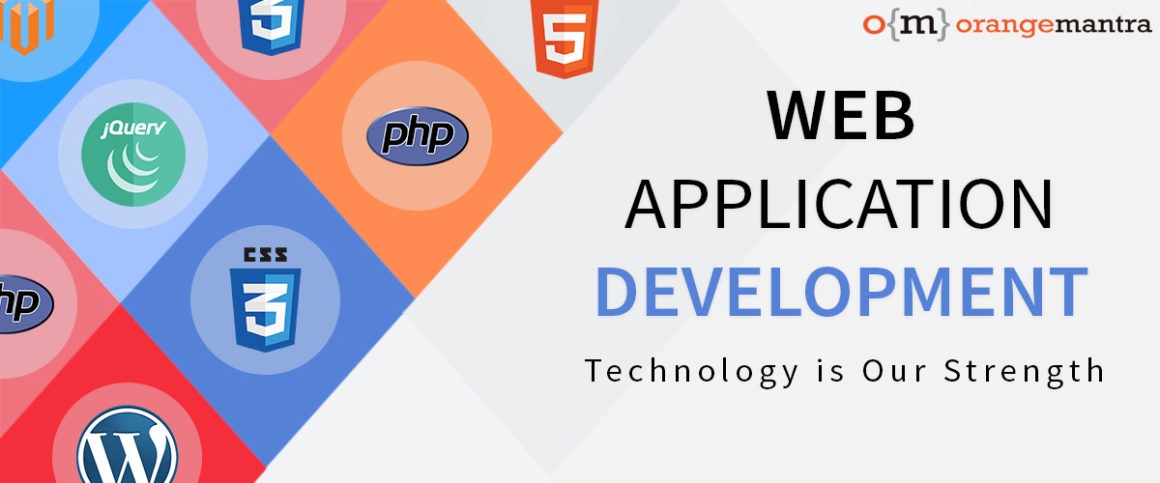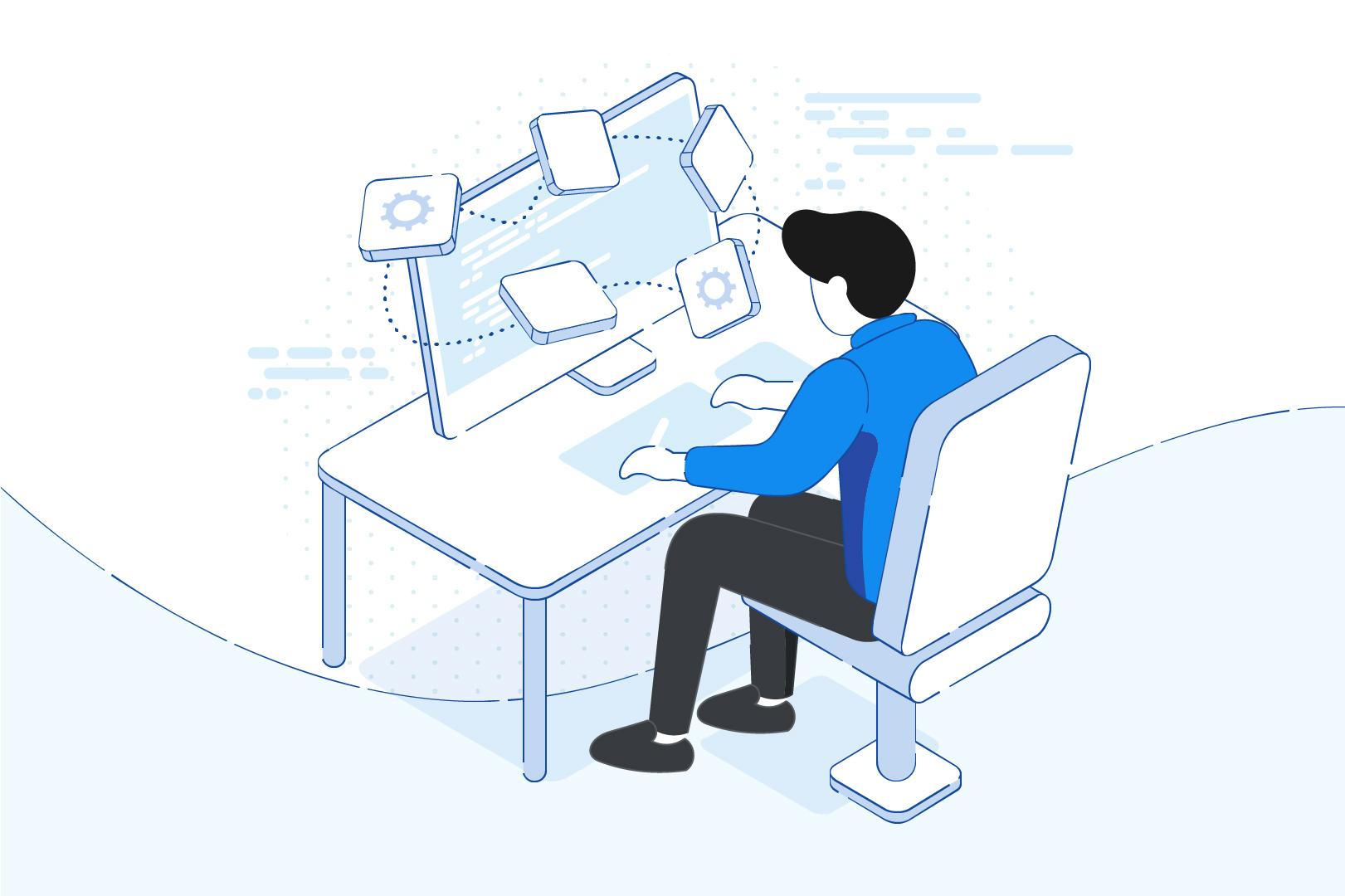The increasing usage of mobile devices has undoubtedly made mobile apps an imperative element of the business arsenal. In fact, it is impossible for businesses, small and large, to imagine sustenance and growth without nailing the mobility game. Consequently, there has been a significant boom in mobile app development services during the last decade. Despite the popularity of mobile apps, web applications continue to hold strong when it comes to empowering businesses. If you are yet to invest in one or are looking to revamp an existing one, let us give you a comprehensive overview of role of web applications in the current business landscape.
How web applications can enhance your business?
Web applications refer to application programs which reside on remote servers but are delivered to the user’s device via the Internet. They need not be downloaded but rather can be accessed through a web browser, which makes them absolutely user-friendly. From the business perspective, investing in web app development is a smart decision because these apps have more than one advantage.
- These applications are accessible anytime, anywhere, and with any device subject to internet connectivity. This means that the employees can always be connected with the team even from remote locations.
- Since these apps can accessed from the web as well as mobile, they make a great option for marketing too. Businesses get an extended reach to connect with audience across various types of devices.
- It is possible to customize the UI of web applications with great ease which indicates that businesses can have them tweaked and updated according to their changing needs.
- The maintenance of web apps is far simpler as compared to that of traditional apps. They offer reliable security, unmatched scalability, and dependable interoperability.
- Web apps come ahead as a cost-effective option in comparison to native mobile apps as they do not require testing for all operating systems and configurations.
What is a technology stack used for web app development?
Web development is a complex process because it requires the use of a modern and comprehensive technology stack to build an application that delivers true value. Primarily, web development involves two aspects and these determine the choice of technologies that are to be used for building the app.
Client-Side Programming: This is the app’s front end that is visible to the users. The technologies that are used for client-side programming include:
- HTML, which manages the way the content of web pages is displayed by the browser and CSS, which is responsible for styling that content. Bootstrap is a framework that manages HTML and CSS.
- JavaScript (JS) makes the web pages interactive and offers libraries and frameworks that support developers.
Server-side programming: This is the part that does not show up for the user but actually powers the application. Some popular languages and frameworks used for server-side programming are:
Further, web applications require databases to store data and the most common ones used are:
-
-
- PostgreSQL (relational)
- MySQL (relational)
- MongoDB (non-relational, document)
-
Also, a caching system is required to handle large amounts of traffic and reduce the load on the database. This is done with the help of cached systems, the popular ones being:
-
-
- Memcached
- Redis
-
Finally, a web application also needs a server for handling requests from the clients’ computers. The two ones are:
-
-
- Apache
- Nginx
-
The choice of the technology stack depends on the requirements that a business expects to be fulfilled by the web application. Also, it has a far-reaching impact on its cost.
What are the different types of apps and how they influence the choice of tech stack?
Before you reach a consensus on the tech stack for your web application, you need to assess your requirements and understand the type of app that you want. After all, you would want to pick a set of reliable tools that enable the creation of an apt solution. Projects are segregated into three types on the basis of their complexity.
-
-
- Basic web applications are the ones that can be created using simple, out-of-the-box tech solutions such as CMS software. Example: Landing pages
- Mid-level applications have more than minimal functionalities and require frameworks to build them. Example: e-commerce apps for larger stores
- Complex web applications need multiple functionalities and integrations and can be developed using a range of programming languages and development technologies. Example: E-commerce marketplaces and social networks
-
In addition to identifying the type of web app, you also need to consider the business goals while choosing the tech-stack for development. For examples, the ones that need to process heavy loads and reduce latency will require advanced technologies in the development stack.
How much does web application development cost?
Before quoting the cost of development, a web development company would assess your requirements and then calculate the costing. At the same time, you should be aware of the factors that can influence it considerably. Here are a few of them:
Project scope: The scope and size of your project matters the most as it determines both, its complexity and estimated timelines. The more the complexity and longer the expected time span, the higher the cost of the application is going to be.
Features and integrations: The cost of the application is directly proportional to the number of features and functionalities that you would want to get integrated into it.
Choice of the development agency: It is but obvious for a reputed agency to charge more as compared to a newly established. Further, the geographical location of the agency matters too because those in Western countries charge more than the ones in India. The latter is a smart choice because it gives you quality services within optimal costs.
Engagement model: The choice of the engagement model is another aspect that directly influences the application development cost. Most agencies offer a choice between fixed price model and hourly model and you can choose the one that aligns well with your objective and expected timelines.
Provision of post-deployment support: Another factor that influences the costing is the provision of post-deployment support for your application. You should be willing to spend a little extra with an agency that offers dependable support because this can be a saving in the long run.
Once the agency provides a quote for the project, you should evaluate it thoroughly to ensure its suitability according to your requirements and budget and time constraints as well. For businesses that are not in a position to spend a lot for implementing complex and multifunctional web application, a Minimal Viable Product (MVP) model makes a great approach. Gradually, features can be added to the application as the business grows. On the other hand, large enterprises can go ahead for full-featured applications as these can deliver tangible results within minimal time spans.
How can one prevent unexpected costs during the development process?
Now that you know all about the cost of web applications and the factors which it depends on, you will be able to understand whether a development company is charging genuinely or is taking you for a ride. At the same time, you should be aware about some unexpected costs that may crop up during the development process and how this situation can be handled. This can happen in the following circumstances:
-
-
- You choose a wrong development partner that provides low price initially and elevates it during the progress of the project or with change requests.
- The project scope increases during its progress and you need extra features in the application than agreed initially.
-
The first issue can be resolved by choosing your development agency wisely. Choose a reputed provider that is honest and transparent right from the start of the project. In case there are chances of scope increase, you should have a contingent plan ready. This is something that you should not cringe on because an application will be beneficial only if it is capable of fulfilling all your requirements and bringing results for the business.
Conclusion
This covers the entire aspects of web application development and you will now probably have a clear understanding of its benefits and costs for your business. Also, it is clear that the choice of a development partner is critical for enabling the creation of a value-adding application right within your budget constraints. Unless you have one that understands your needs and delivers them through an optimally-priced app, you will not be able to get what you are looking for.
OrangeMantra is a leading name that you can trust for building a web application for your business. We offer comprehensive expertise, right from UI UX design to development, testing, deployment, and support. This means that you get everything that you need for creating a result-oriented web application for your business. Additionally, we are honest and transparent when it comes to the costing of our services, so you can expect a worthy solution at an optimal cost. Start by sharing your requirements with us and we will create a perfect solution for your business.






















